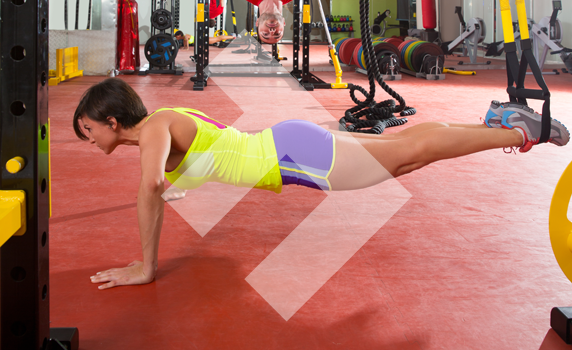Many of us associate core strength with the holistic benefits of Yoga or Pilates and specifically, if you believe the current trends on YouTube, toning those abs in isolation of other muscle groups. However, your body’s ‘core’ not only includes those abdominals but also all of the muscles associated with your hips and spine.
In fact, with all of the muscles which stabilise the spine and the pelvis being involved, your core is basically your whole body apart from your head and limbs, which is why core strength stability is important for anyone who enjoys a sport or fitness activity which relies on movement, including running and athletics activities, cycling and weight lifting. Stabilizing and strengthening this core is seen as being one of the greatest ways to improve performance and overall fitness for all kinds of athletes and sporting professionals.
So, if you’re working on your fitness performance for another discipline, or you struggle with back pain or poor balance it might be worth considering that any exercise which makes those muscles work harder will strengthen them, as well as improve your overall endurance. As such, it might be time to consider how you can use a gym’s facilities to help you develop greater core strength.
With Weights
There’s a real cycle of benefits at play when using weights: it’s impossible to lift weights without engaging your core and by engaging it properly and regularly you’ll strengthen and stabilise your muscles to assist you to use the weights and promote this core strength, as well as build your overall stamina and improve balance. Exercises, recommended by The Factory Gym in London, which might benefit with this specifically include:
- Russian Twists – using a small dumbbell
- Good Mornings – but it’s essential to keep your back straight, so don’t try this on your own if you’ve never done it before; ask a professional trainer to guide you into the right positions
- Dumbell lunges with crossover – as with good mornings, getting the bend right is essential for this exercise, both for your back and your knees. Make sure you have professional instruction to start with
- Exercises involving kettlebells, which require your core strength to help stabilise your body against the ‘pull’ of the weight
With Gym Equipment
Although much of the regular gym equipment targets specific groups of muscles in isolation to others, there are some pieces of equipment which also help to build core strength:
- Lat pull downs on the lat machine
- Suspension Trainer – I’d recommend the one from Loxley Sports, it’s superb
- Chin ups using the chin bars or chin up machine
- Steppers
- Cross-training machines which include incline running. It’s worth remembering that strength exercises aren’t included in the recommendations for daily aerobic exercise, so using cross-trainers will complement both core strength and aerobic capacity development – ideal for athletes-in-training
- Exercise bikes
- Circuit workouts – these support the development of overall core strength and can also provide a good warm-up activity before moving on to the preferred fitness or sporting activity, such as running, cycling, playing basketball or weightlifting, for example
On The Mats
With or without resistance bands and exercise/stability balls:
- Squats, push-ups, sit-ups
- Yoga or Pilates postures which focus on core strength, such as the Plank, Scissors and hip extension postures – these are particularly good exercises for cyclists whose core strength notoriously fails before those much more developed leg muscles give up over long distances and road races
- Boxer ball crunches
- Pelvic thrusts
- Bridge exercises – an exercise routine which includes prone, lateral and supine bridge exercises will assist development of all the key muscles in the core, including the anterior and posterior muscles within the trunk and pelvis, transverses abdominis and abdominal obliques
Finally, the last tip which really gets to the core of strengthening exercises is this: any exercise will only be beneficial if performed correctly, in fact, using the wrong technique could cause long-term injury. So, before embarking on any core strength development at the gym, it’s important to learn the correct technique for each exercise from a qualified physical trainer or gym professional.
Ask to be shown how to use the equipment to perform the exercises and aim for at least two sessions a week of approximately 20 minutes each for optimum, consistent development. And when you feel ready to move on? Check in with the gym’s professional training staff for advice on your progress and increasing the repetitions or pace of the exercises you’re doing, rather than overdoing it by moving on before you’re ready.
![]()
 Instagram
Instagram Pinterest
Pinterest Facebook
Facebook Twitter
Twitter YouTube
YouTube




 Paul
Paul 



